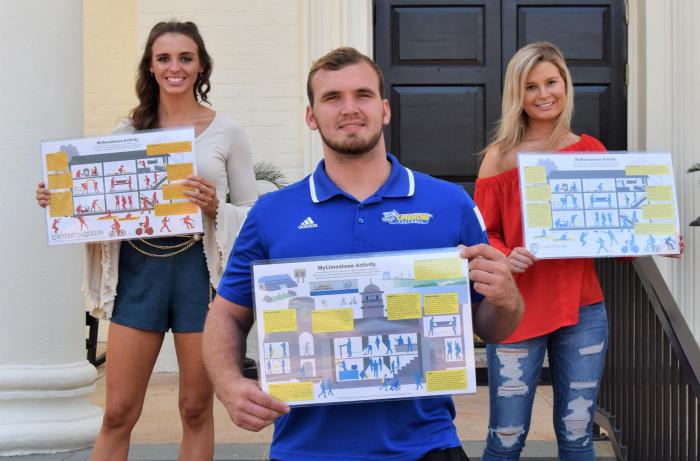February 2nd, 2021
Cavallini, Limestone Students Have Research Article Published
Limestone professor Dr. Felicia Cavallini wasn’t alone this time when she once again had her research published recently in the Journal of Physical Activity Research, as she was joined by three of the University’s students.
The Physical Education students who co-authored the article with Cavallini include Makalynn Callaghan (Summerville, SC), Caylee Premo (Duncan, SC), and James Scott (Lincolnton, NC). University of Guelph professor Dr. David J. Dyck was also a co-author. The title of the published article was “Lack of Time is the Consistent Barrier To Physical Activity & Exercise In 18- to 64-Year-Old Males And Females From Both South Carolina And Southern Ontario.”
The purpose of the study was to compare and contrast Southern Ontarian and South Carolinian adults to examine adults’ psychological, lack of time, and physical barriers to physical activity and exercise. Cavallini and her team also sought to determine whether any gender differences existed in the identification of prominent barriers to physical activity.
Research showed that among adults age 18-to-64, in both South Carolina and Southern Ontario, lack of time was consistently the most commonly identified type of general barrier to physical activity. That was true of both males and females in the study. The most commonly indicated barriers among the respondents across both age groups and populations were: “Other things are more important and require my time and energy,” “I have a difficult time finding the time needed to fit the gym into my day,” “Once I get home, it’s difficult to find time to be active,” and “There are so many other things for me to do, it’s easy to make excuses rather than exercise.”
“The only significant difference in responses among genders was in Southern Ontario, where females indicated inclement weather was a significant physical barrier,” Cavallini noted. “Interestingly, negative perceptions of exercise, pain, or lack of interest, did not appear to be significant barriers. Overall, lack of time, whether perceived or real, is the major barrier to physical activity in adults 18-64. Examining and identifying perceived barriers to exercise and physical activity is necessary to develop successful intervention programs.”
According to the research, meeting the physical activity guidelines requires creative methods with a better appreciation for personal preferences which may help improve the way individuals promote, educate, and inspire others to have the confidence to be more active.
Cavallini’s research is a part of the ongoing study from 2015 when she completed an 11-month Fulbright Scholar Student/Research Grant in Canada where she was introduced to Dyck and served at the University of Guelph as a Visiting Research Chair in the Human Health and Nutritional Sciences Department.
Along with her students, Cavallini used her physical activity research data, gathered in Guelph, representing the younger adult populations both in Canada and the United States that reveal preferences for lifestyle physical activity, lack of time (both real and perceived), and the importance of enjoying the physical activity experience among our younger citizens, including students.
A Professor of Human Health and Nutritional Sciences, Dyck completed his Masters and Doctoral degrees at the University of Guelph, studying the mechanisms underlying the interaction between fat and carbohydrate utilization in contracting skeletal muscle.
The same three students represented the “theory into practice” portion of Cavallini’s peer-reviewed research journal “Cultivating, Developing, and Promoting Lifestyle Physical Activity in College, for Life,” that was published in the August 2020 issue of the American Journal of Educational Research. Dyck joined Cavallini in co-authoring that article.
ACCOMPANYING PHOTO: (Left to right) Caylee Premo, James Scott, and Makalynn Callaghan seen in October of 2020 holding “MyActivity” graphics that were a part of one of Cavallini’s published peer-reviewed research journals.

